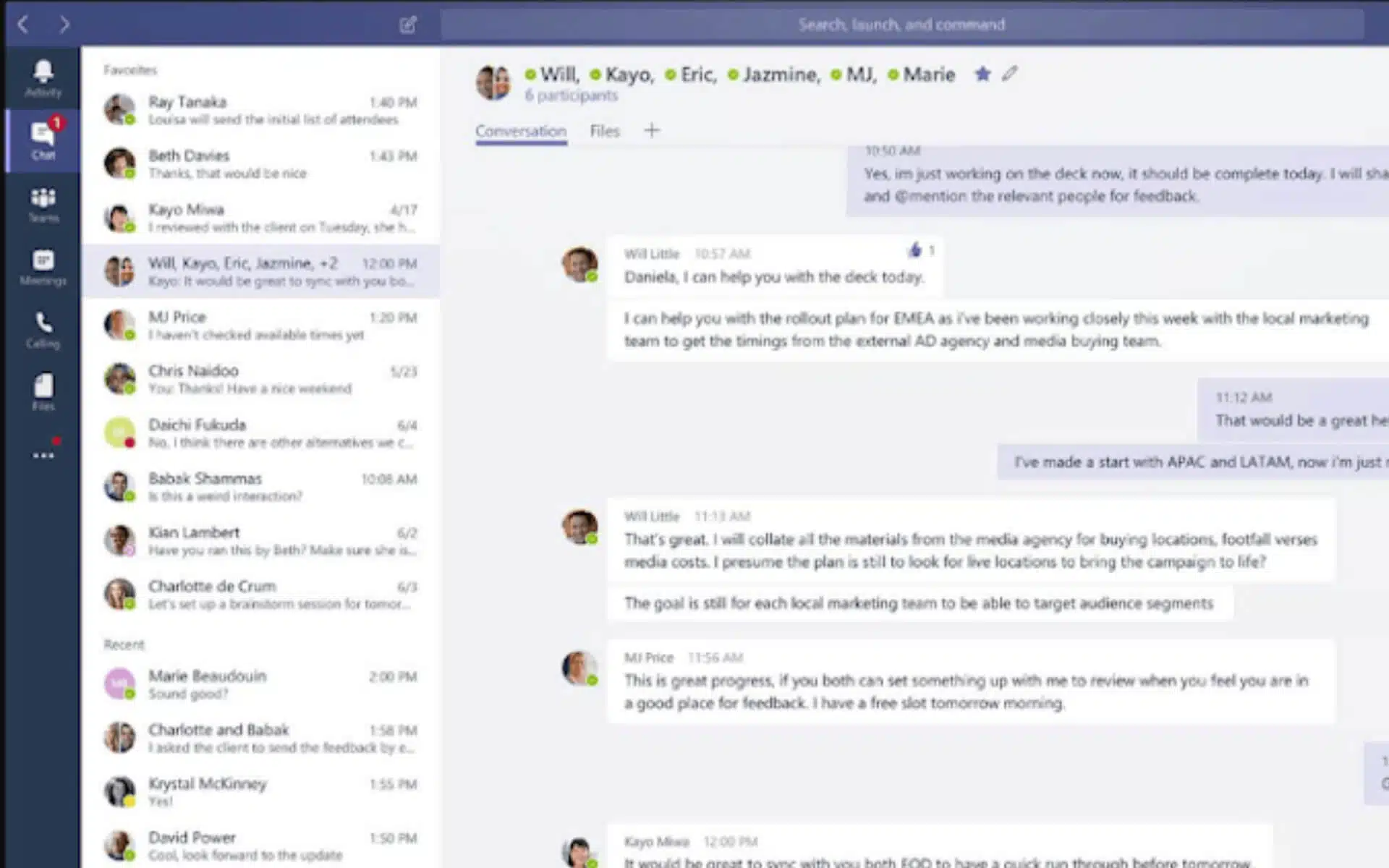Episode 41
It is Monday morning; a weekend has passed where you were fortunate enough to not have to check your email for two whole days. The reprieve is now met with dread as you stare at the 200+ unread emails. A few hours later, the list has been parsed, a few quick responses sent, and now you can start your day…after addressing the 30 new emails that have newly appeared. It is a situation that is all too familiar. Organizational agility suffers when the primary means of communication and collaboration is done through the wrong communication medium. The means of communication must be multifaceted to match the numerous needs of an organization. Reliance on a single tool like email is the equivalent of a golfer hitting the course with only their drivers. This blog will cover how email, text chat, and video can be more effectively used, like a golfer bringing all the clubs they need to stay under par.

Emails are best thought of as your long game. The hole may or may not be visible, but you know the direction to go. It is possible to see some obstacles, but their full nature is hard to determine from where you are currently standing. Shots from the tee-box are high impact but do not have the fidelity compared to using an iron or putter. This is the golf equivalent of an email. Ideally, a one-way, a written body of information, intended to pass along high-level details to one or many parties. Due to the extremely low information through-put of email, back and forth exchange is not productive. Tee-off shots are critical for setting up the remaining hits for a successful under par hole. Likewise, emails require care and attention to ensure that follow up discussions by other mediums are successful. A bad tee-off leaves the golfer a long way from the fairway, with multiple follow up shots used to correct the error. The same is true with a poorly constructed email. We have all been stuck on that RE:RE:RE:RE:RE:RE:RE:RE:RE:RE email chain which long ago derailed as a few individuals debated back and forth on the best way to proceed.

Ok, you made the tee-off shot, and with some good fortune we are on the fairway. We can see around the trees we shot over, the sand trap that was missed, and the flag is now in sight. The green is up on a hill, so it is hard to know exactly the slope and the risk if we overshoot. But by putting away the driver and taking out an iron, we now have far more control over our next shot. If we are short or long it is far easier to correct compared to a missed shot from tee-off, and certainly the distance to the hole will be shorter after this next shot. Getting to the green is the equivalent of using text chat. We have more clarity on our goal, obstacles are known and visible, and now we need a medium with a higher throughput for idea exchange. Chats are great for throwing out ideas, asking for quick input or details, and do not require the same degree of forethought or formality of an email. Most chat platforms will support gifs, and honestly, I have not found anyone that does not appreciate a good cat gif. At the same time, chat is limited by the speed of information that can be typed and interpreted between two individuals or a group involved in the discussion. Additionally, if chats do become extended, text is a poor medium for explaining context compared to speech. It is like using your iron on the green. An active text discussion, which can be especially bad in group chats, can lead to notification exhaustion, non-followers being needlessly distracted, or individuals learning to avoid text chat in preference of just email or meetings.

So close now, we are on the green. The hole is 15 feet away. Every bump and contour are visible, details like this were irrelevant earlier as the tools used to get here lacked the accuracy. To get this next shot perfect, every detail between where you are now, and the hole is a factor to consider. This is when a discussion requires a deeper understanding of context than what an email or text chat conversation can facilitate in a reasonable period. In the age of remote work, this is where video calls shine. At least until we have a reliable brain machine interface, speech and body language is the highest throughput medium we have for individuals to exchange information. Just like we would not use a driver or iron on the green, we do not use the putter at tee-off. Ever walk away from a meeting that accomplished nothing? For a meeting, everyone is required to be present, and in the moment, where with email and text chat, it is only a requirement for the author as the recipients can take the time to digest before responding. A useless meeting is the discussion of the small three-inch-deep six-inch-wide divot two feet from sand-trap #3 about 150 yards from the tee-off to the right of the fairway after the water hazard. For a great meeting to take place, the team needs to work through the course together using the right tools, matching the throughput and context requirements of each exchange on the journey.
Just using email and meetings takes away from the value that can be applied while still on the fairway. Quick check-ins, or information requests, allow organizations to quickly share necessary information to remain agile and relevant. While a quick email might seem like not a big deal, conversational emails often lead to inbox hell, lowering the potential value when compared to using email more strategically. Too heavy of a reliance on chat, can lead to an overpopulation of cute cat gifs that result in excessive distractions and a reduced velocity of information exchange as context takes much longer to communicate through text than voice. Over-reliance on meetings drops groups into discussions of details that might not be relevant for the task at hand, potentially wasting valuable time.
Last Updated: July 10, 2025



